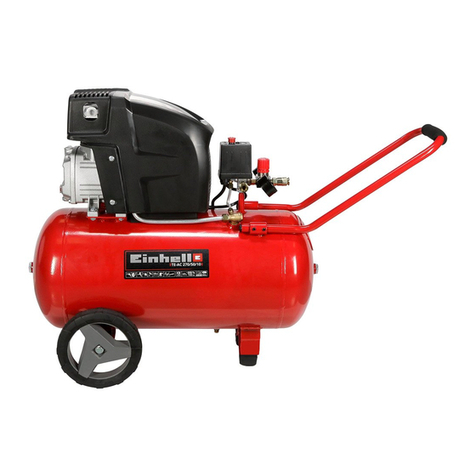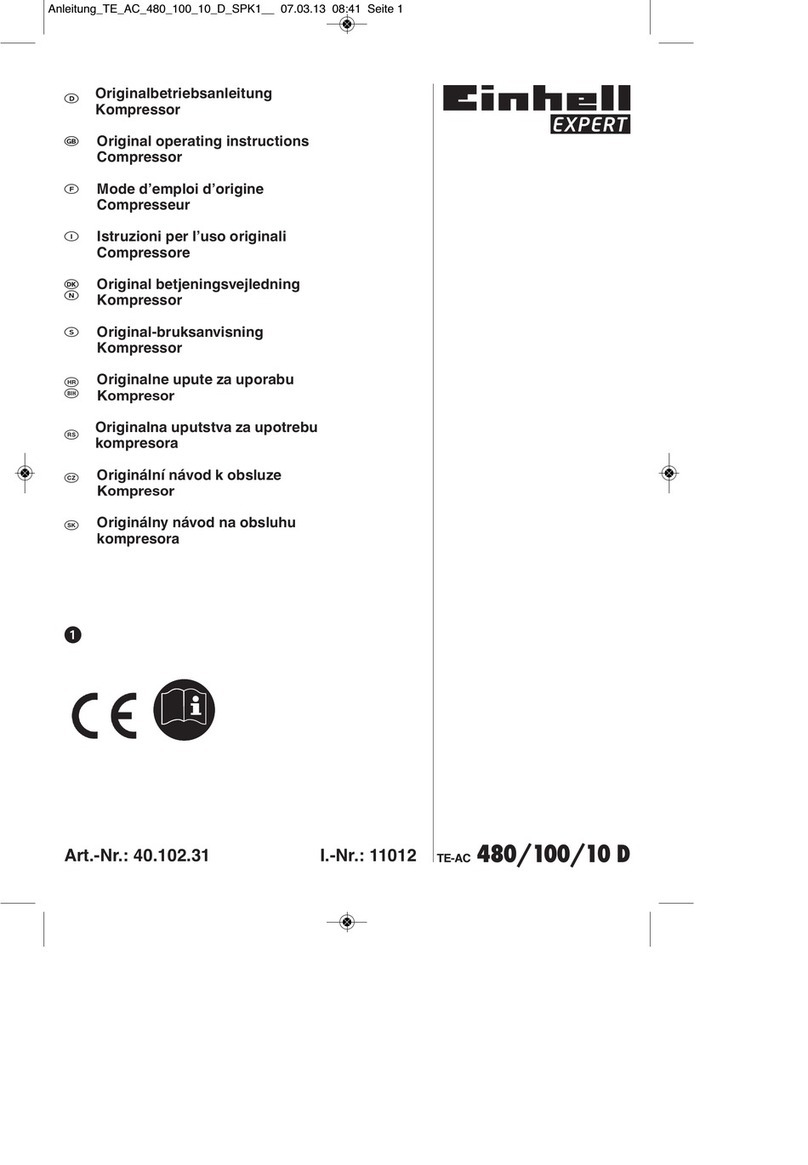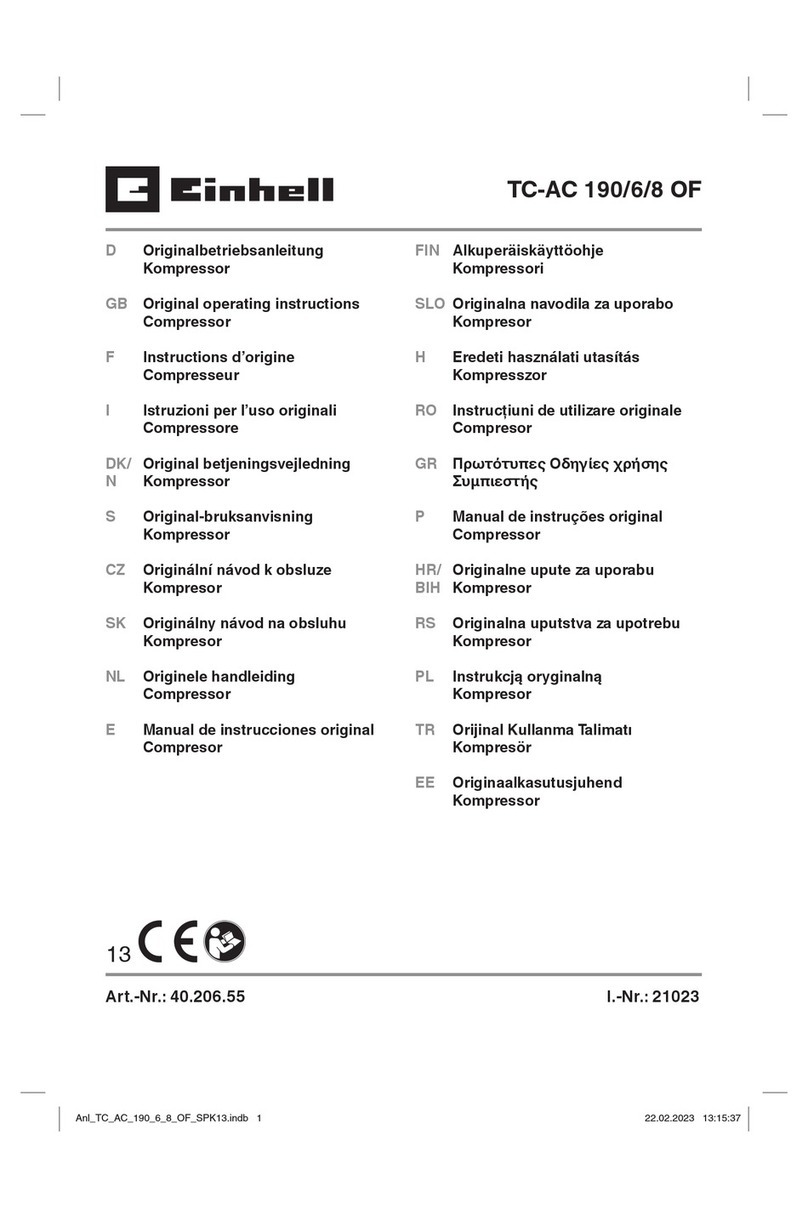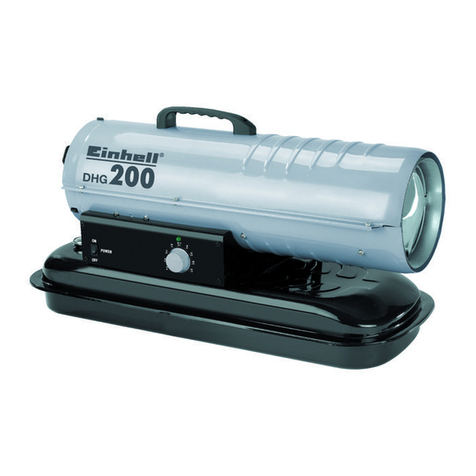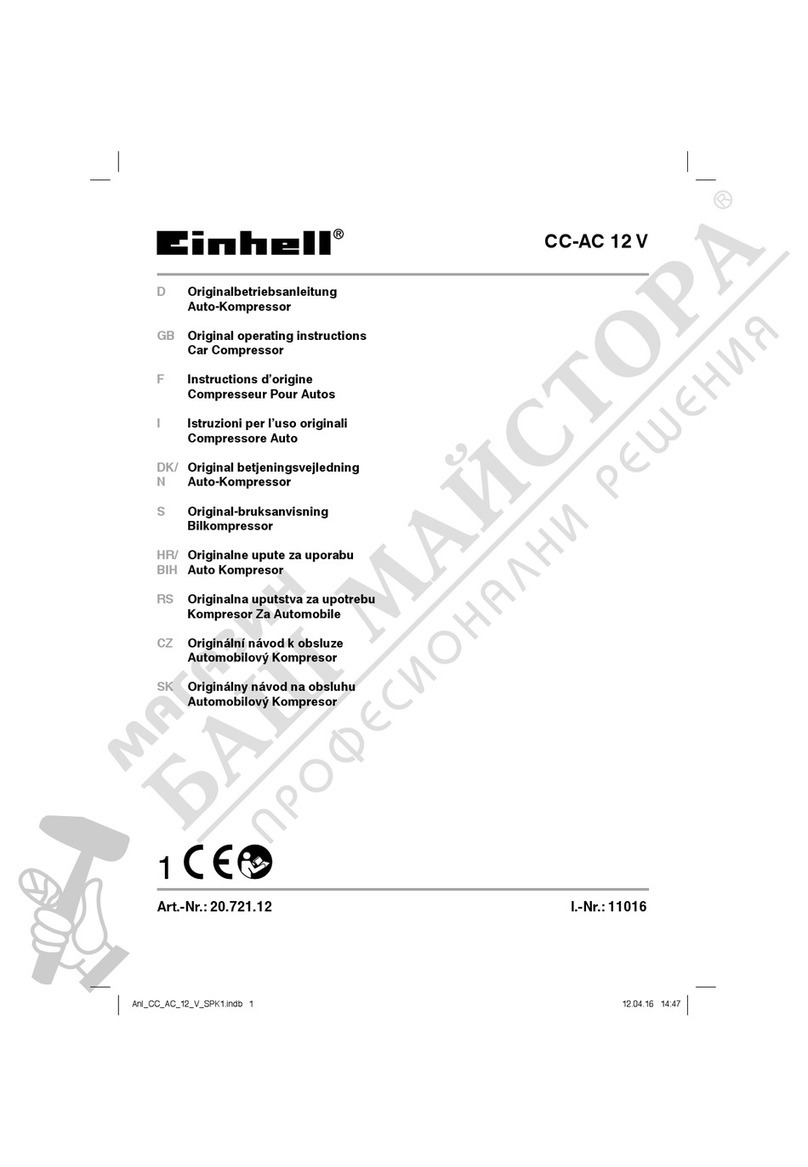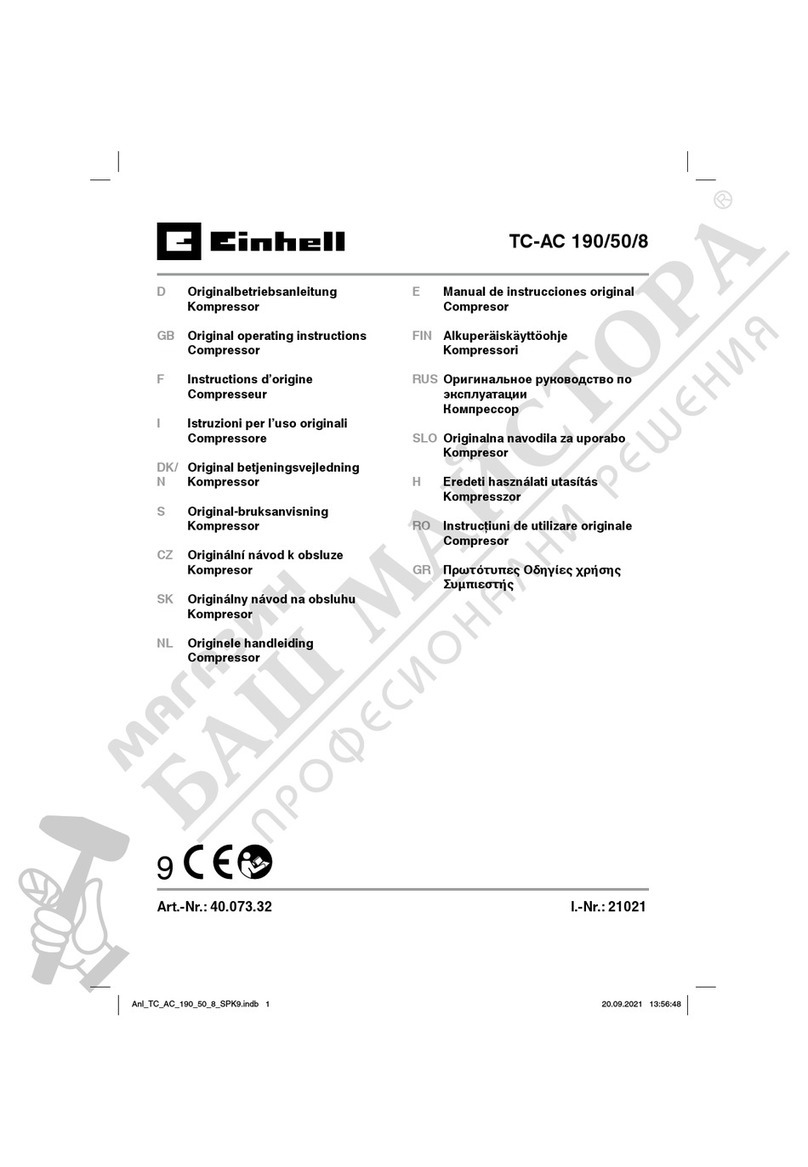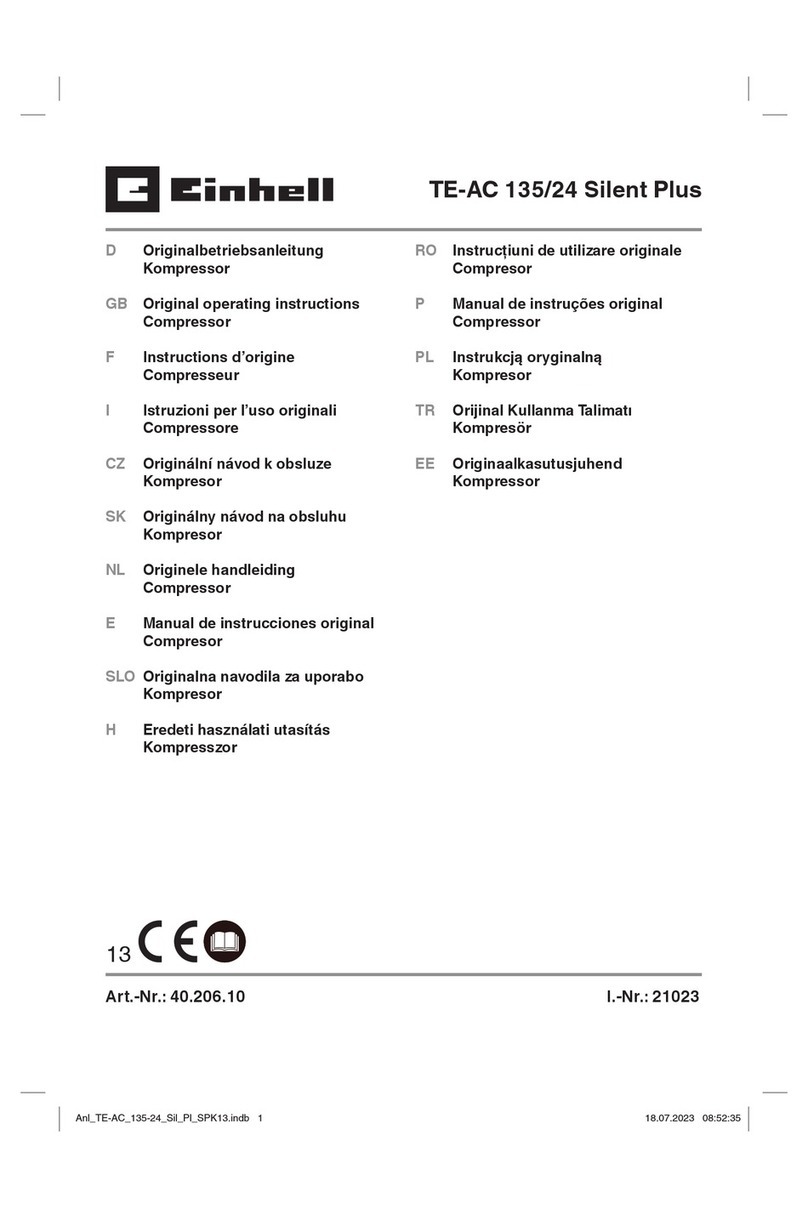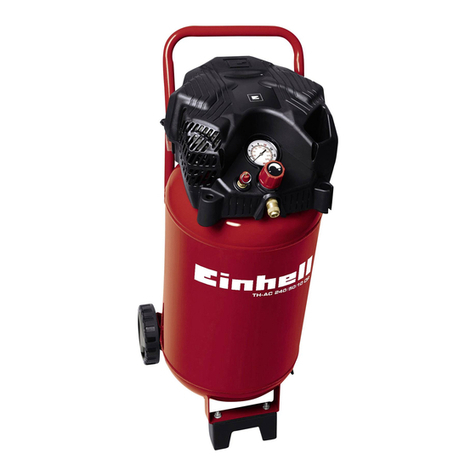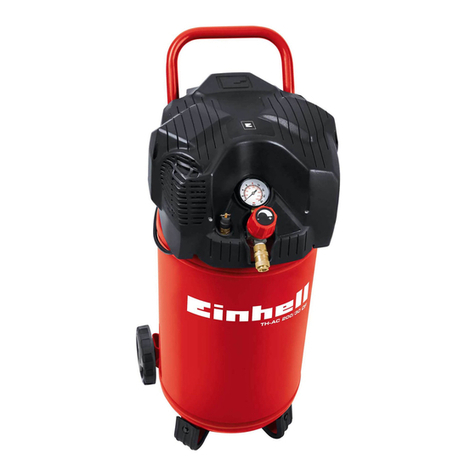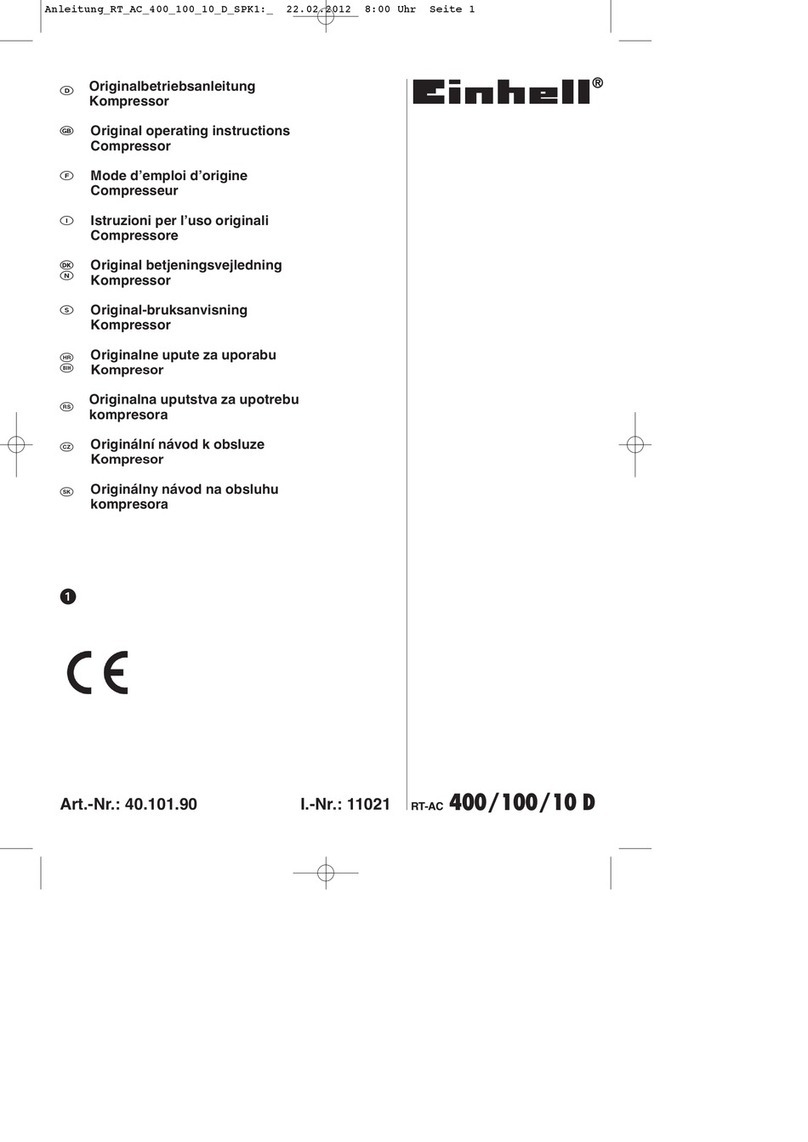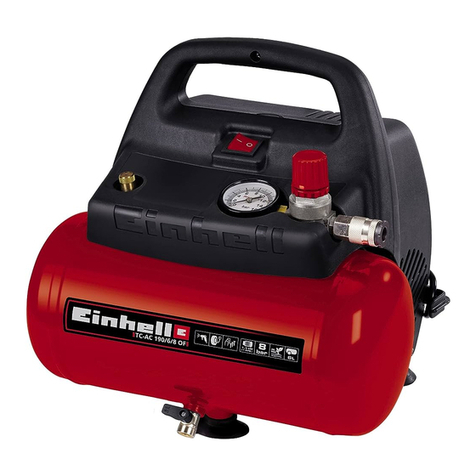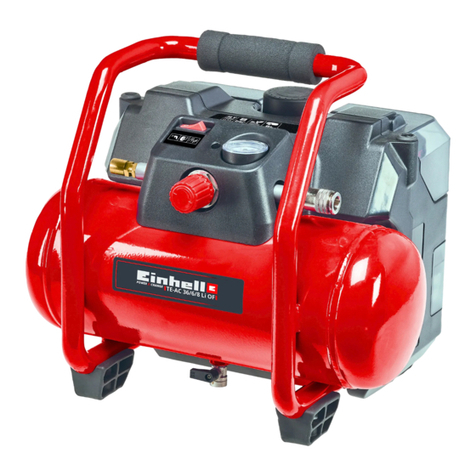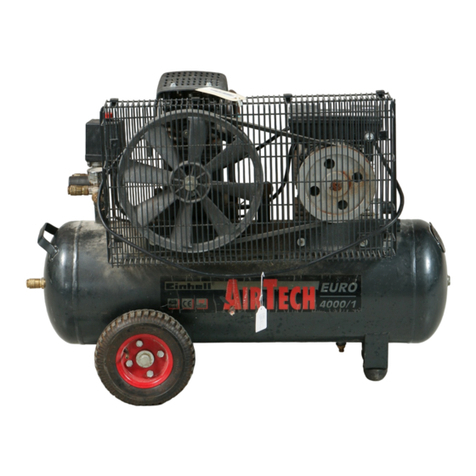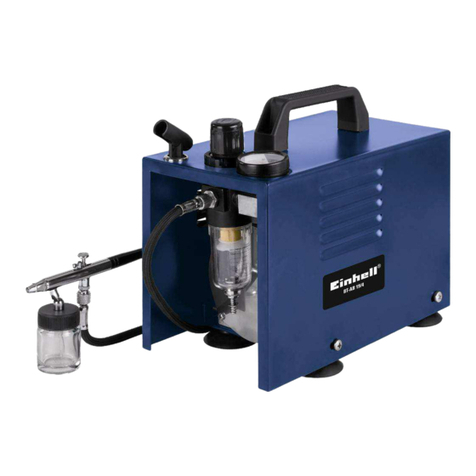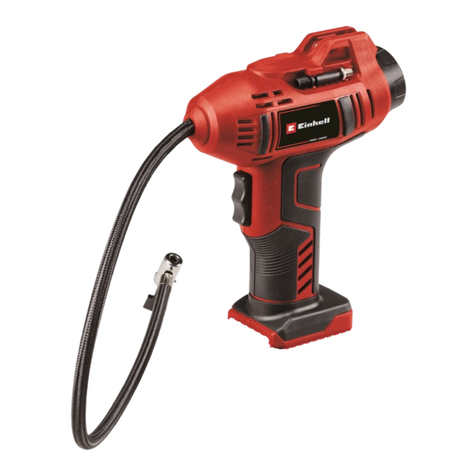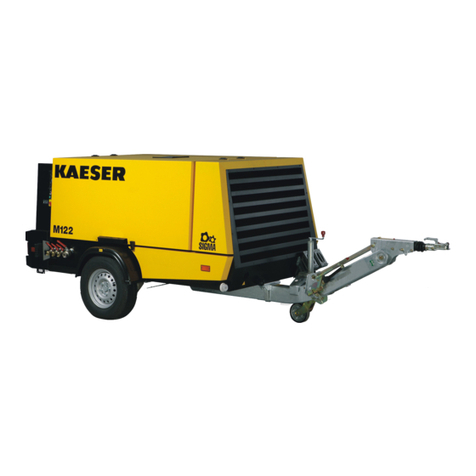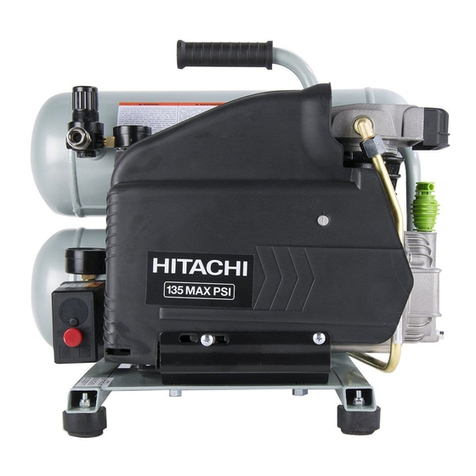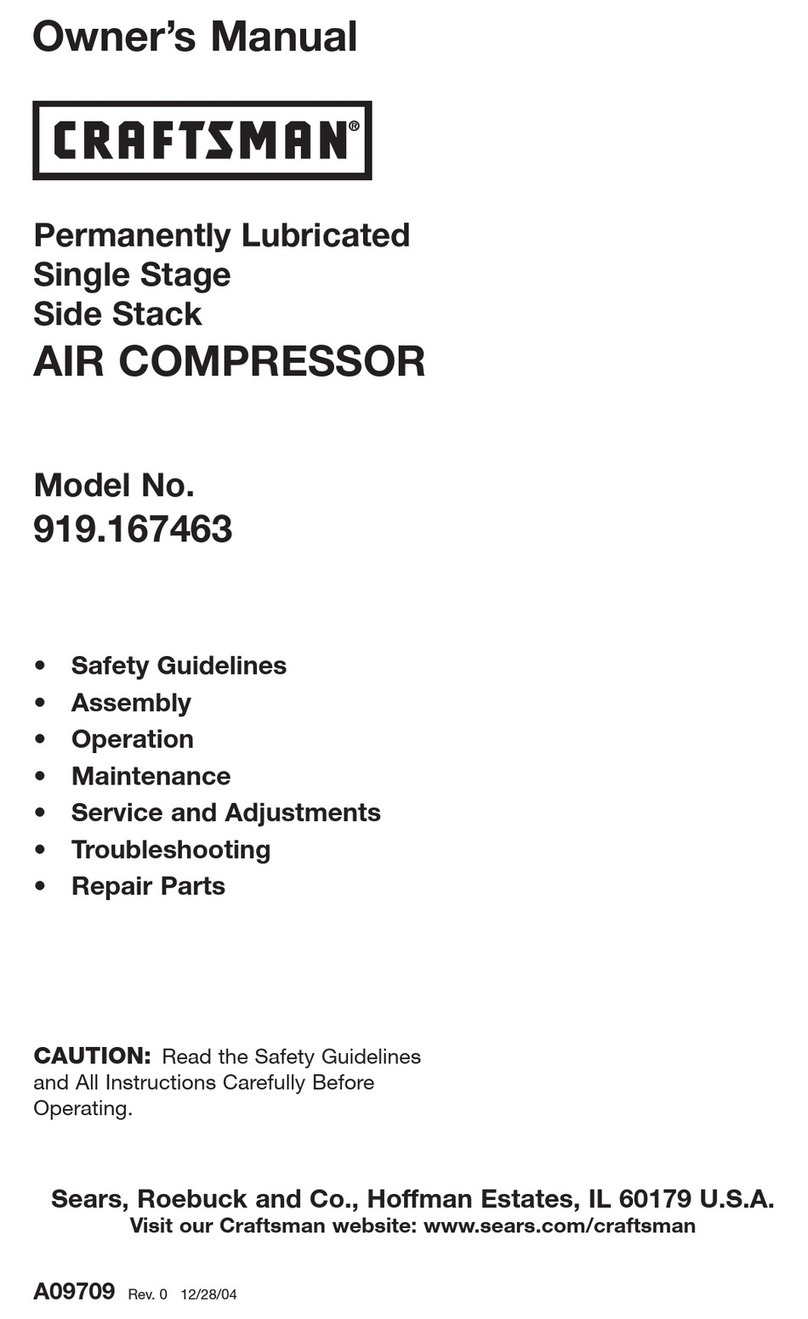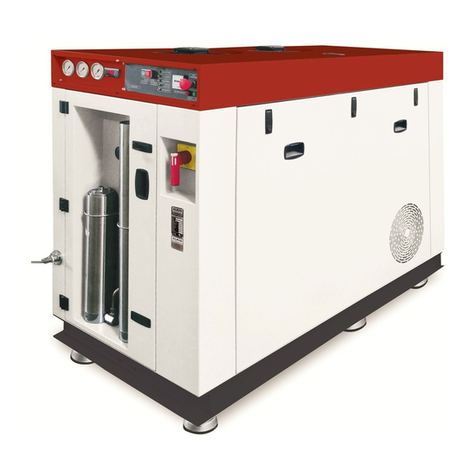
GB
- 21 -
• You must disconnect the hose and any
spraying tools from the compressor before
cleaning. Do not clean the compressor with
water, solvents or the like.
8.2 Condensation water (Fig. 1)
Notice! To ensure a long service life of the pres-
sure vessel (2), drain offthe condensed water by
opening the drain valve (11) each time after using.
Check the pressure vessel for signs of rust and
damage each time before using. Do not use the
compressor with a damaged or rusty pressure
vessel. If you discover any damage, please con-
tact the customer service workshop.
Notice!
The condensation water from the pressure
vessel will contain residual oil. Dispose of the
condensation water in an environmentally
compatible manner at the appropriate collec-
tion point.
8.3 Safety valve (10)
The safety valve has been set for the highest per-
mitted pressure of the pressure vessel. It is prohi-
bited to adjust the safety valve or remove its seal.
8.4 Check the oil level at regular intervals
Place the compressor on a level and straight
surface. The oil level must be between the two
marks MAX and MIN on the oil oil level window
(Fig. 11).
Changing the oil: Recommended hydraulic oil:
SAE 15W/40 or an alternative of the same quality.
It should be relled for the rst time after 100
hours of operation. Thereafter the oil should be
drained and relled after every 500 hours in ser-
vice.
8.5 Changing the oil
Switch offthe engine and pull the mains plug out
of the socket. After releasing any air pressure you
can unscrew the oil drainage screw (15) from the
compressor pump. To prevent the oil from running
out in an uncontrolled manner, hold a small metal
chute under the opening and collect the oil in a
vessel. If the oil does not drain out completely, we
recommend tilting the compressor slightly.
Dispose of the old oil at a drop-offpoint for
old oil.
When the oil has drained out, re-t the oil draina-
ge screw (15). Fill new oil through the oil ller ope-
ning (17) until it comes up to the required level.
Then replace the oil sealing plug (14).
8.6 Cleaning the intake lter (1)
The intake lter prevents dust and dirt being
drawn in. It is essential to clean this lter after at
least every 300 hours in operation. A clogged
intake lter will decrease the compressor‘s per-
formance dramatically. Undo the screws on the
air lter so that the halves of the air lter housing
can be opened. Use compressed air at low pres-
sure (approx. 3 bar) to blow out all the parts of
the lter and then assemble the lter in reverse
order. When cleaning, take adequate precautions
against dust (e.g. use a suitable face mask).
8.7 Retensioning the V-belt (Figs. 12-15)
• Pull out the power plug and remove the safety
guard for the V-belt.
• Slacken the four motor fixing screws (A).
• Shift the motor until the V-belt is tensioned to
the point where it can still be depressed by
approx. 1-2 cm at the longest free position.
• Retighten the motor fixing screws (A) and refit
the safety guard for the V-belt.
8.8 Storage
Warning!
Pull the mains plug out of the socket and ventilate
the appliance and all connected pneumatic tools.
Switch offthe compressor and make sure that it is
secured in such a way that it cannot be started up
again by any unauthorized person.
Warning!
Store the compressor only in a dry location
which is not accessible to unauthorized per-
sons. Always store upright, never tilted!
Store the equipment and accessories in a dark
and dry place at above freezing temperature. The
ideal storage temperature is between 5 and 30
°C. Store the electric tool in its original packaging.
8.9 Transport
• Use the handle for transporting the compres-
sor and use it to move the compressor about.
• Transport the equipment only by carrying it by
the transport handle.
• Protect the equipment against unexpected
knocks and vibrations.
Anl_TE_AC_430_90_10_SPK9.indb 21 21.10.2020 14:47:47

